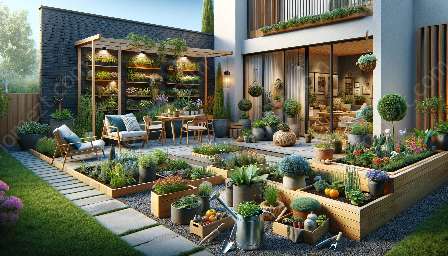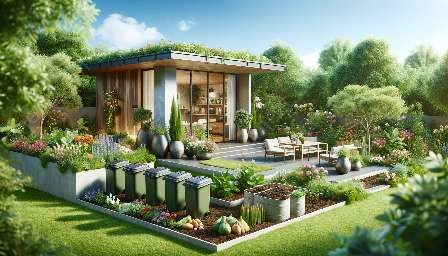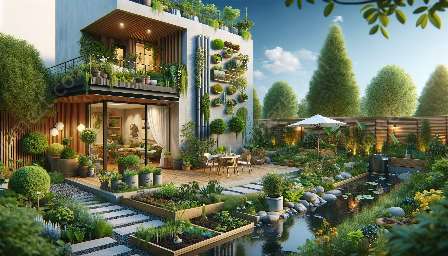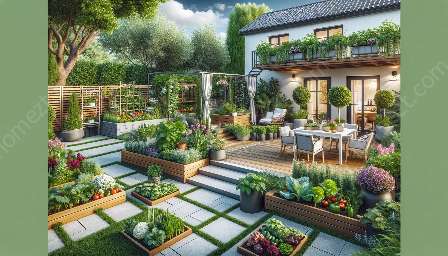Permaculture is a design system that integrates the principles of sustainable agriculture, ecological design, and natural building. It focuses on creating harmonious and productive relationships between humans, plants, animals, and the earth.
When applying permaculture principles to your yard, patio, and home garden, you can create beautiful, productive, and eco-friendly outdoor spaces. Let's explore the key concepts and practices of permaculture and how you can implement them in your own outdoor areas.
The Principles of Permaculture
Permaculture is guided by three core ethics: care for the earth, care for people, and fair share or reinvesting surplus. These ethics are supported by a set of principles that help design systems that are sustainable and regenerative.
1. Observation and Interaction
Observing and interacting with nature is fundamental to permaculture. By understanding and working with natural patterns and processes, you can create resilient and productive ecosystems in your yard, patio, and home garden.
2. Designing from Patterns to Details
By recognizing and utilizing patterns in nature, you can design your outdoor spaces with a more holistic and efficient approach.
3. Integrate Rather than Segregate
Connecting different elements in your outdoor spaces can create mutually beneficial relationships between plants, animals, and structures.
4. Use Small and Slow Solutions
Small-scale, slow, and thoughtful solutions often have a greater long-term impact and require less maintenance.
5. Use and Value Renewable Resources
By prioritizing renewable resources in your outdoor spaces, you can reduce your environmental impact and support sustainable practices.
6. Produce No Waste
Design your yard, patio, and home garden to minimize waste and make the most of resources through recycling, repurposing, and composting.
7. Design from Patterns to Details
By recognizing and utilizing patterns in nature, you can design your outdoor spaces with a more holistic and efficient approach.
Applying Permaculture to Your Yard and Patio
When transforming your yard and patio using permaculture principles, consider incorporating edible landscaping, rainwater harvesting, composting, and creating wildlife-friendly habitats. By planting a variety of native and resilient plants, you can create a low-maintenance and productive outdoor space that supports biodiversity.
Edible Landscaping
Instead of traditional lawns, consider planting edible plants, fruit trees, and herbs in your yard and patio. This not only provides fresh, organic produce but also contributes to a more sustainable and resilient ecosystem.
Rainwater Harvesting
Collecting and storing rainwater can help reduce water usage and provide a sustainable irrigation source for your plants. Utilize rain barrels, swales, and permeable paving to capture rainfall and direct it to where it's needed most.
Composting
Turning organic waste into nutrient-rich compost can enhance soil fertility and reduce the need for chemical fertilizers. Set up a composting system in your yard or patio to recycle organic matter and create a closed-loop nutrient cycle.
Wildlife-Friendly Habitats
Encourage biodiversity by creating habitats for beneficial insects, birds, and small animals in your outdoor spaces. Incorporate native plants, flowering species, and sheltering opportunities to support a healthy and balanced ecosystem.
Enhancing Your Home Garden with Permaculture
Bringing permaculture principles into your home garden allows you to grow a diverse range of fruits, vegetables, and herbs while promoting soil health, pest control, and ecological balance. Consider implementing raised beds, companion planting, perennials, and mulching to create a thriving and sustainable garden.
Raised Beds
Constructing raised beds can improve soil structure, drainage, and accessibility for gardening. They also provide an opportunity to fill with nutrient-rich soil and compost, creating an optimal environment for plant growth.
Companion Planting
Pairing compatible plant species in your garden can promote natural pest control, enhance soil fertility, and maximize yield. By creating diverse plant communities, you can mimic natural ecosystems and increase the resilience of your garden.
Perennials and Trees
Integrating perennial plants and fruit trees into your home garden provides long-term yields and contributes to the overall health of the ecosystem. They offer shade, habitat, and food for both humans and wildlife, creating a balanced and sustainable environment.
Mulching
Applying mulch to your garden beds conserves moisture, suppresses weeds, moderates soil temperature, and adds organic matter to the soil as it breaks down. It also mimics the natural forest floor, supporting the growth of beneficial microbes and soil organisms.
Closing Thoughts
By embracing permaculture in your yard, patio, and home garden, you can create outdoor spaces that are not only visually appealing but also sustainable, productive, and resilient. Applying the principles of permaculture allows you to work in harmony with nature, reduce your environmental footprint, and contribute to the health of the planet. Whether you're growing your own food, creating wildlife habitats, or conserving resources, permaculture offers a holistic approach to designing and maintaining outdoor spaces.





























